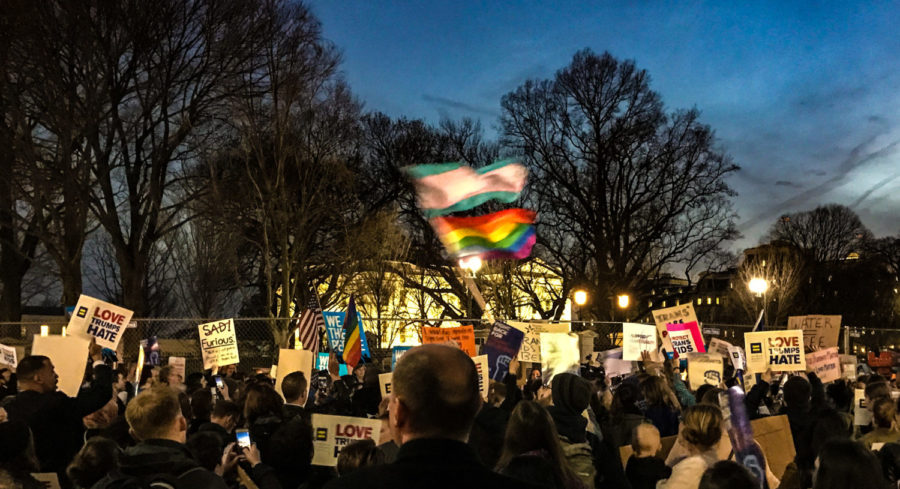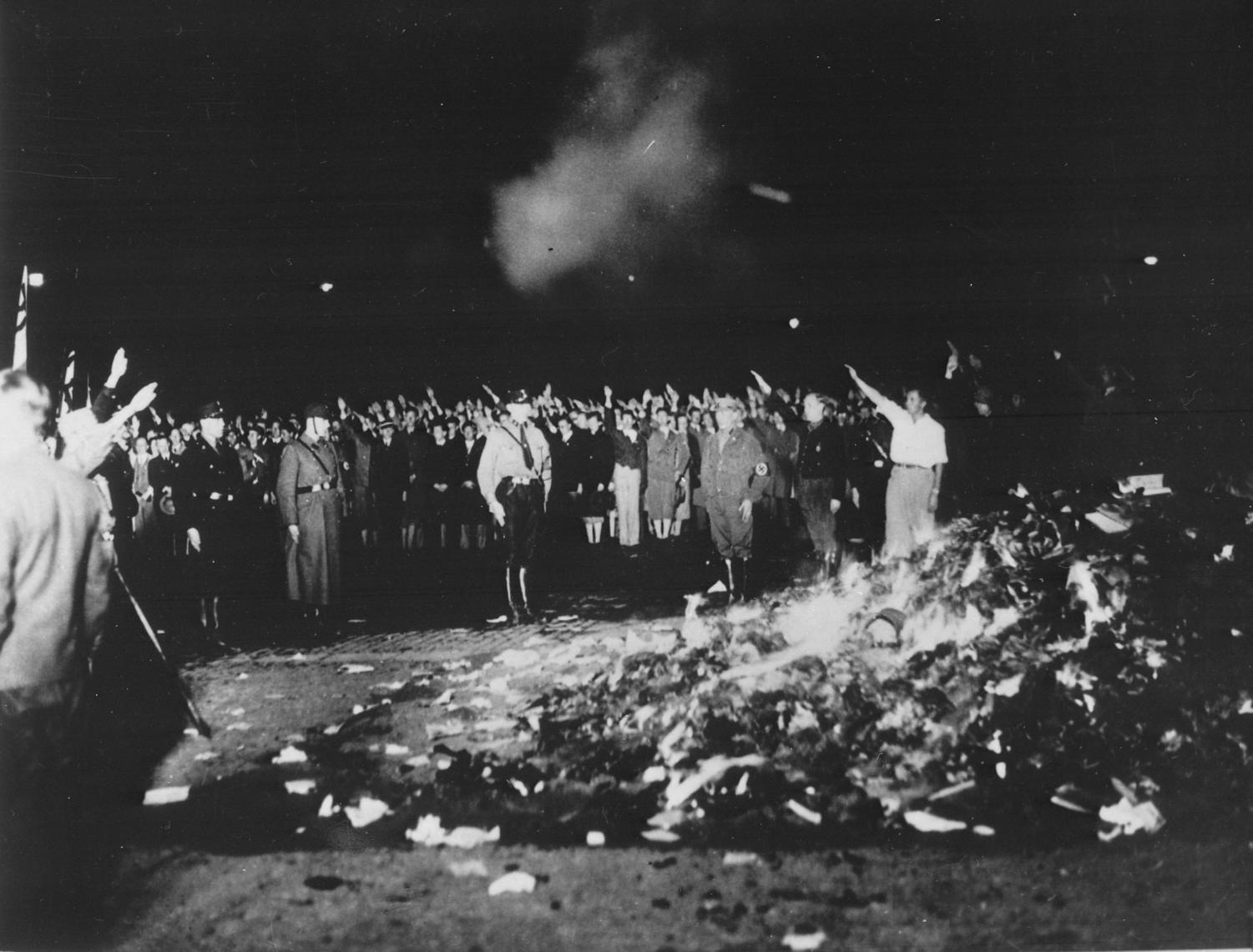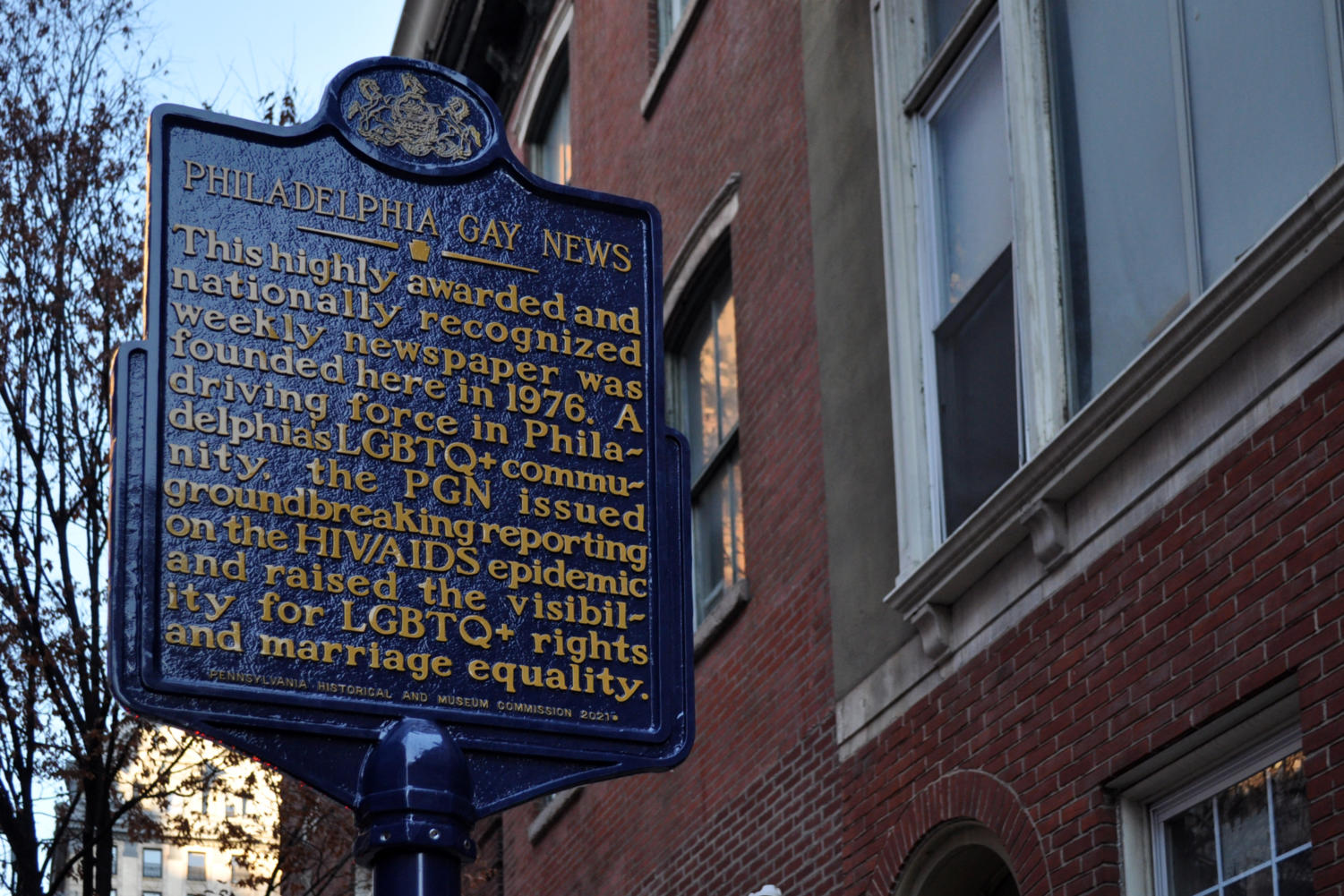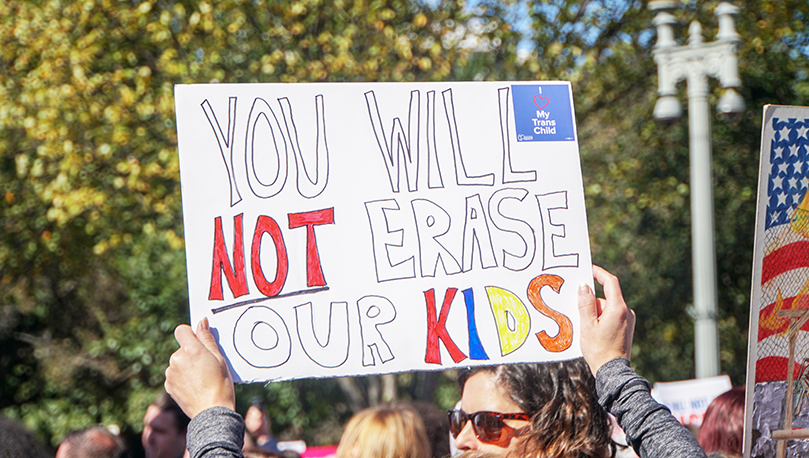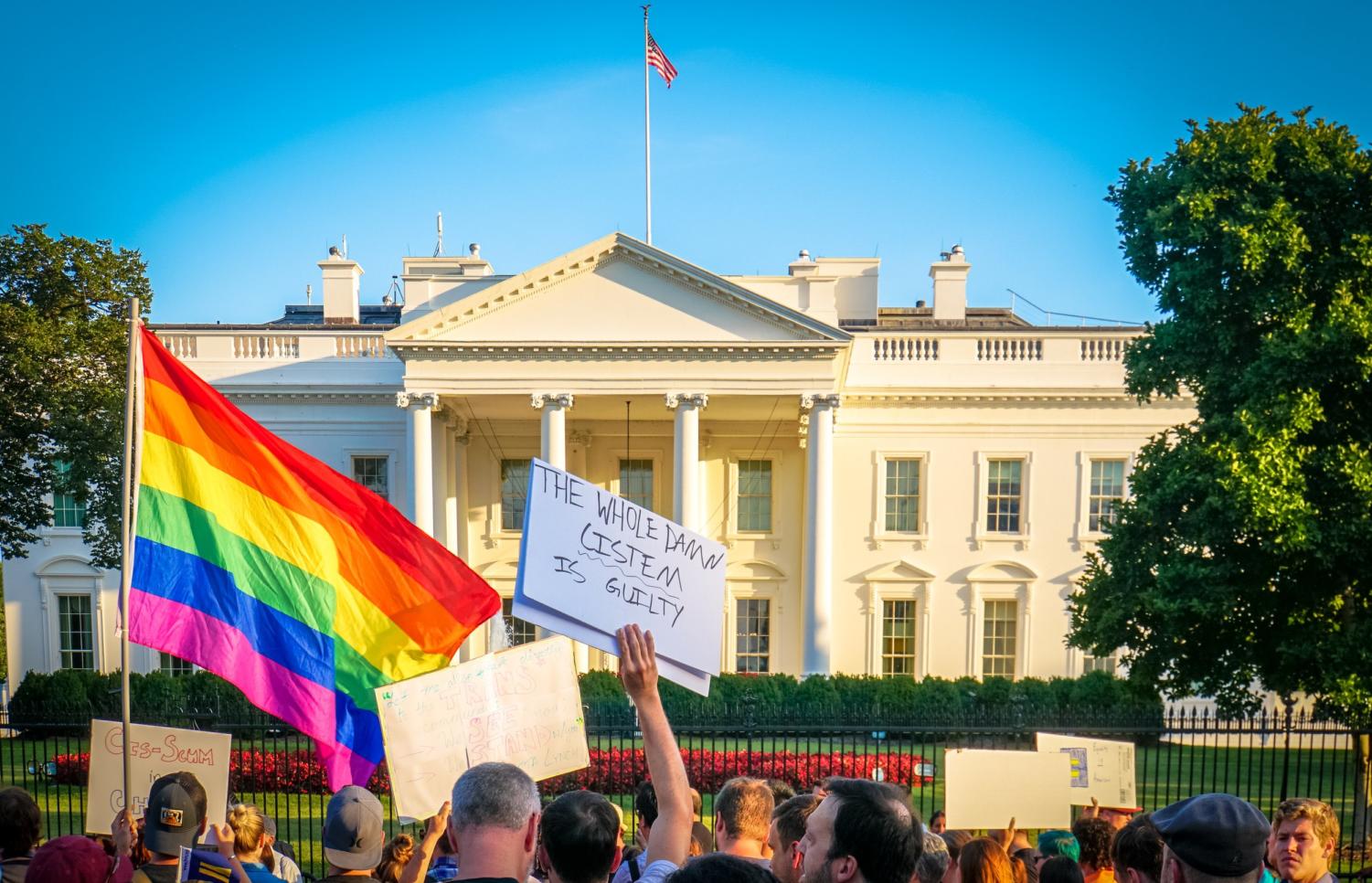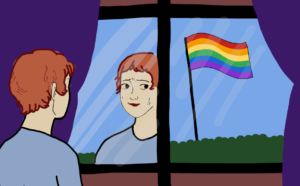Dispelling all LGBTQ myths
February 27, 2023
TW: mentions of queerphobia, abuse, self-harm, violence, and genocide
A dreaded culture war has now arrived at SRVUSD. Jesse vanZee narrowly beat out Michelle Peterson to win a seat on the SRVUSD school board. vanZee campaigned against “woke education” and “gender theory,” promising to stop “indoctrination,” “grooming” and “sexualizing children” at schools. He did not immediately respond to a request for comment.
vanZee ran following a similar political playbook many conservative candidates around the country use; they capitalize on misinformation and fear-mongering by waging a culture war on “wokeism.” Most recently, College Board removed Black Queer Studies — among other things — from their AP African American Studies course after Florida Gov. Ron DeSantis (R) banned the course in his state, claiming it “lacks an educational purpose” and pushes a “political agenda.”
“A moral panic about alleged LGBTQ ‘grooming’ serves to justify the imposition of ideological controls on public education — and the speech rights of progressive and LGBTQ teachers,” Zach Beuchamp, a Senior Correspondent for Vox News, wrote.
For DeSantis, his culture war is more of a means to an end, a legitimating tactic for policies explicitly designed to undermine free speech in schools and strengthen his party’s grip on power. With additional restrictions on higher education and social media, the DeSantis agenda has combined repressive tools with a culture-war message, a design that resonates with America’s conservatives.
Such a design consists of politicizing book bans in U.S. schools, bans that adhere to unreasonable demands from parents and the general public. A wave of parents in various school districts, including SRVUSD, have raised concerns to school officials that library books or classroom curricula contain inappropriate content for children.
The Tribune reported last November that Rainbow Rowell’s novel “Carry On” was requested to be removed from the Dougherty Valley High School library. Between Jan. 1 and Aug. 31, 2022, ALA documented 681 attempts to ban or restrict library resources, and 1,651 unique titles were targeted.
Many schools have removed books such as “Gender Queer” by Maia Kobabe, “All Boys aren’t Blue” by George M. Johnson and “And Tango Makes Three” by Justin Richardson and Peter Parnell, often citing problems with “sexually explicit” material. Claims that books about sexuality and gender identity somehow concern sexual activity conveniently forget that actual sexual content has existed for decades in classical literature such as “Romeo and Juliet” (which a survey shows was taught in 91% of U.S. high schools in the 80s), the only difference being that it’s heterosexual.
Teaching sexuality and gender identity topics to youth can be as simple as making students aware that a girl can like another girl, a boy can like another boy, and there are students who feel their personal sense of gender does not align with what society says their gender is.
Library books about sexuality and gender identity usually navigate the first-person stories of LGBTQ students, providing relatable experiences to students who may be questioning their feelings. They often have themes of bullying or harassment at school, which function as a lesson for students; if it makes readers uncomfortable, they’re less likely to repeat it.
Promoting dialogue about sexuality and gender identity undoes stigmatization, creating a safer school environment for students, who can then be freer about their identities and relationships. But when parents label these books as porn, discussion becomes stigmatized.
AP African American Studies has never been a required course and most U.S. history classes still don’t include LGBTQ history. So why do parents scour through curricula to call out sparse mentions of the LGBTQ community? To parents, it’s not only about their own kids, but about other kids as well. Parents with strong anti-LGBTQ religious or cultural ideas believe the “righteousness” of their personal opinions is justification for invalidating LGBTQ youth and preventing all students from learning about the LGBTQ community within or outside of school classrooms.
At DVHS, there’s discussion about LGBTQ topics, but at last year’s Student Voice Forum, the Tribune reported students saying “in some classes, [we] see human rights on the line and they’re being debated in classroom settings.” Students were repeatedly “discussing whether or not you should exist.” Many complained, “we talk as if the LGBTQ+ community is something separate from the people in our class.”
In contrast, other states enforce outdated “No Promo Homo” laws that restrict educators from discussing LGBTQ+ people or issues. Regardless, the conversation in SRVUSD shouldn’t be about removing discussion about the LGBTQ community, but instead the opposite: teaching more LGBTQ history within U.S. history classes. Not only is there historical importance behind the LGBTQ rights movement, but such historical knowledge — that has been excluded from most schools for decades — can spread a positive message to this generation of students and counteract any negative stigma in schools.
“When students learn about the historical contributions of famous individuals from both majority and minority backgrounds, they are less likely to display prejudiced attitudes,” Melanie Killen, a Professor of Human Development and Quantitative Methodology at the University of Maryland wrote.
The Tribune previously reported that jokes related to LGBTQ topics were censored by DVHS admin on March 24, 2022. The jokes, referencing sexuality, were allegedly not family friendly, and DVHS admin alluded to what the reaction from parents in the audience would be.
In Florida, Zander Moricz — a former senior class president of Pine View High School — said school officials threatened to cut off his microphone and halt his graduation ceremony if in his speech he mentioned being gay or referenced any of his LGBTQ activism. There’s a common theme here: both schools voiced concerns there would be disapproval from observing parents.
The parents that inspire school censorship pretend censoring mentions of the LGBTQ community turns off the existence of LGBTQ youth. Then, those parents are shocked if anyone in their local community, someone they know personally, or even their own child comes out of the closet.
No matter how heteronormative or cisnormative a school is, there are always going to be students who find such an environment amiss. Maintaining a protective nature around LGBTQ-related topics from a young age will never eliminate these feelings — rather it may teach students such feelings are wrong, breeding internalized homophobia and intolerance as they grow up.
“At this age, the whole world is their cognitive puzzle. They’re trying to figure it out. And so when they notice patterns, if they’re not getting explanations for why these patterns exist, they often infer that these are norms or rules, that this is how it should be, and in fact that these things must have been caused by meaningful or inherent differences between groups. This is why, although it can seem counterintuitive, our silence… can in fact, and does in fact, increase prejudice,” Scott Gordon, an associate editor with WisContext wrote.
Its effects are felt across the LGBTQ student community. A study in 2019 found that LGBTQ youth are three times more likely to attempt suicide than their peers. The Trevor Project — an organization providing crisis intervention and suicide prevention services to LGBTQ teens and young adults — estimates that more than 1.8 million LGBTQ youth aged 13-24 seriously consider suicide each year in the U.S. and at least one attempts suicide every 45 seconds.
“LGBTQ youth are not inherently prone to suicide risk because of their sexual orientation or gender identity but rather placed at higher risk because of how they are mistreated and stigmatized in society,” the Trevor Project wrote.
Both students in class and parents at School Board meetings portray LGBTQ youth as if they come from outside the family, school, or community. This discourse is pivotal to the idea that alienating LGBTQ youth can effectively reduce their numbers. Reality check: LGBTQ youth live in both families or communities that tolerate LGBTQ individuals and those that don’t, however, it’s likely they’re more hidden if they live in less accepting environments. Being forced to constantly hide is damaging.
“Experiences of LGBTQ-based victimization — and the internalization of these experiences and anti-LGBTQ messages — can compound and produce negative mental health outcomes,” The Trevor Project said.
Children don’t wake up one day and randomly decide they want to be LGBTQ after hearing about the LGBTQ community. Even if they are struggling with internal acceptance, they just… are who they are. The brutal reality is if there was a magical pill one could take to “turn straight”, many kids would take that pill — and this is what school Pride seeks to reverse — to make students feel comfortable and confident with their identities in spite of the constant threat of intolerance.
Holistically, parents have a horrible track record for ensuring their kids’ safety. High rates of teenage pregnancy led to schools teaching sexual education in classrooms since conversations weren’t happening at home. High rates of school shootings and suicide can in many instances be traced back to abusive parenting. If children had healthy environments at home, many students might have had the support to carry on.
Assuming their children will be straight until proven contrary, parents have failed to ensure that their children grow up in inclusive environments, necessitating the need for their children to come out of the closet. This practice creates trauma for children left to discover their identity on their own in the dark, with little support.
Absurdly, some parents have expectations for their children to be “flawless” but instead of being prepared for the possibility that their child is different — and by no means a bad way — they stay in denial, often causing harm to the children they seek to “save” from being different. Some parents even force their children to attend conversion camps that falsely claim to change someone’s sexual orientation or gender identity by using prayer, exorcism, physical violence or food deprivation.
“Among LGBTQ youth, only one-third experience parental acceptance, with an additional one-third experiencing parental rejection,” The Trevor Project stated. “LGB young adults who report high levels of parental rejection are eight times more likely to report attempting suicide.”
On the other hand, the children who bully, taunt and assault LGBTQ students at “anti-woke” schools and get away with it have parents… and those parents are usually indifferent or advocating for queer erasure, mirroring their children’s malicious behavior. Kids aren’t born hateful. Hate is a learned behavior.
“Parents’ subtle prejudice predicts children’s implicit prejudice regardless of the parenting style. Findings indicate that children might acquire prejudice by means of the parents’ implicit cognition and automatic behavior and educational actions,” according to a study conducted by a group of researchers.
Why do we accept that parents are better at teaching children than schools? Why do we continue to prioritize parental rights over the rights of the children themselves? Instead of causing immense harm to LGBTQ youth, parents should first deconstruct heteronormativity and cisnormativity within their own families; then they’ll have ground to stand on when making demands to leave LGBTQ conversations for home.
Only through careful examination of world history can the origins of LGBTQ hate be unveiled. Religious ideologies in the Bible such as gender complementarity (Genesis 1:26-2:21) and sin (Genesis 19:1–13; Leviticus 18:22; 20:13; Romans 1:26–27; 1 Corinthians 6:9; 1 Timothy 1:10) have led to generations of harm to the LGBTQ community. LGBTQ individuals have existed since the first humans walked the Earth and a vast number of animal species, including ones that share human common ancestors, have populations that are gay, lesbian, etc. but LGBTQ persecution seems to originate from the spread of intolerant religious beliefs that LGBTQ individuals are “wicked”, “abominations” and should be “put to death”.
For example, before most of Africa was colonized by Europeans, many African societies celebrated gay individuals and some didn’t have a gender binary or assign gender at birth. The Quran expresses little about homosexuality outside of Sodom and Gomorrah, a story that never deterred the overwhelming amounts of same-sex attraction and intimacy in Premodern Arab literature and poetry. But African, West Asian and other societies that had once been accepting and inclusive to LGBTQ individuals became less tolerant after the world-wide spread of Christianity by purantical Europeans.
After Europeans arrived in the Americas, Two Spirit Native Americans were some of the first to experience genocide. Spanish missionaries threw Two Spirit people into pits of starving dogs, where they were viciously torn apart. George Catlin, an artist who became famous for his painted portraits of Native American people, said in the early 19th century that the concept of Two Spirits “must be extinguished before it can be more fully recorded.” In India, British imperialists launched a campaign to reduce the number of hijras with the objective of gradually causing their “extinction”. Hijras were considered “hereditary criminals” and were forcibly castrated at the urging of Chrisitan leaders and eugenicists; they are still heavily marginalized in Indian society today.
Religious theologists preach LGBTQ individuals are both “unnatural” and “immoral” because they don’t procreate, or further the human race. Such fears are irrational; the human race is threatened by overpopulation — not underpopulation — in part due to global efforts by religious conservatives to limit access to sexual education, contraceptives and abortion. Regardless, couples that can’t procreate for various reasons have multiple ways to start families such as adoption, which helps find homes for abandoned children in orphanages and does more for humanity than excessive procreation ever will.
Today, people should be more aware of the religious underpinnings of queer erasure, and remember the culture war is religious-based intolerance under the guise of protecting children. The reality is religious individuals and institutions for many hundreds of years have attempted to shape society to adhere to their perceived morals of what is “right” and “wrong”. And as a result, thousands of children in the LGBTQ community are hurt — not protected — by family-based religion. One study of LGBTQ youth aged 18–24 found that parents’ religious beliefs about homosexuality were associated with double the risk of attempting suicide.
People should continue to have the freedom to practice their religions but refrain from enforcing religious ideologies on others, especially their own children. Religious institutions often facilitate indoctrination from a young age, to retain unwavering worshippers across generations. But morality can exist outside of religion; children don’t need it to tell right from wrong. Children should discover religion on their own — or not — instead of it being unwillingly molded from a young age into their vulnerable moral compass of rationality and reason. Perhaps this would force religious leaders to eliminate harmful doctrine, in an effort to appeal to new generations and survive long-term.
Anti-LGBTQ beliefs have incited decades-long discriminatory practices against LGBTQ individuals of all ages. Many LGBTQ hospital patients experience discrimination from healthcare workers on the basis of their sexual orientation or gender identity and as a result avoid seeking medical care. A large example of healthcare discrimination is HIV stigma. Stretching back to the 80s, healthcare providers have had irrational or negative attitudes, behaviors and judgments towards people living with or at risk of HIV, which has caused countless preventable HIV-related deaths.
Even recently, a Texas court ruled that requiring employers to provide coverage for HIV preventative medication violates religious freedoms and is unconstitutional. The plaintiffs made it sound as though they were being forced to condone sodomy, suggested they want HIV patients to enter life-threatening conditions to punish a minority of them for being gay and bisexual, and somehow all of this was found to be a part of their constitutional freedom to practice religion.
TERFs (trans-exclusionary radical feminists) and anti-trans activists have rallied behind an idea that men are better athletes than women and therefore, allowing trans women to participate in women’s sports teams places cis women at a disadvantage. However, TERFs perpetuate a false stereotype.
“There is a pernicious and persistent sex-based hormone myth that says testosterone is exclusively male, estrogen exclusively female, and that testosterone is the secret ingredient for athletic success,” Cara Ocobock, the Director of the Human Energetics Laboratory at Notre Dame wrote. Alternatively, “Estrogen seems to play a critical role in endurance performance.”
Studies show there are no meaningful neurological differences between women and men. True, anatomically, on average, men have larger muscle mass than women but there is no difference between women and men in terms of being able to activate muscle, known as neuromuscular recruitment. There was a time in human history when women had greater arm strength than today’s competitive rowers. However, contemporary gender roles have pushed men toward and women away from gaining upper body strength.
Claiming that men are inherently better than women at sports is not only untrue, but counterproductive; people should work against gender constructs that discourage women from becoming athletic in search of a future with equitable all-gender sports.
A particularly damaging belief held by many parents is that trans women are threats to children because men will dress feminine-presenting to gain entry into women’s bathrooms. Associating trans women with sexual perversion vilifies hundreds of thousands of innocent people.
Despite laws in many states allowing trans women to use women’s bathrooms, there have been no consequent increases of sexual assaults in bathrooms. The reasons are twofold. First, sexual assault remains a crime no matter why someone claims they entered a women’s space. Second, male predators aren’t waiting for alleged loopholes like this to pop up, they act regardless.
Such fear tactics exploit ignorance to paint an entire population as threatening, pushing trans women out of public spaces. Labeling an entire group of people as “rapists” and triggering public hostility is a form of genocidal rhetoric seen time and time again throughout history, one that legitimizes violence against them.
An estimated 58,200 transgender youth ages 13 and older are at risk of being denied gender-affirming medical care due to proposed and enacted state bans and policies that label it as child abuse, according to the Williams Institute at UCLA School of Law. Gender-affirming medical care for children includes the use of hormones to promote physical development that is consistent with a child’s gender identity, and its effects are reversible.
The idea that parents who support their LGBTQ child actively influenced their children’s gender identity is absurd; a parent permits their child to undergo hormonal treatment because the child is certain after seeing gender constructs in everyday life that their gender identity doesn’t match their sex, and because the parent cares about their child’s well-being. The only parents who are actively influencing their children’s gender identity are those knowingly confining their children to the gender they were assigned at birth, despite their child’s reluctance.
For adults, conservative activists raise the alarm about gender-affirming surgeries like hysterectomies, yet are unabashedly silent about state-sponsored “normalizing” surgeries performed on intersex children and FCM surgeries performed on many young girls born into religious families. The obvious distinction between gender-affirming surgery and forced surgery is consent, and banning consensual surgeries for adults makes it a victimless crime.
People consider gender-expansive concepts to be a new phenomena despite that they’ve been around for centuries. Hundreds of distinct societies around the globe, including 150 Native American Tribes and African, Indonesian and Pacific Islander societies, had long-standing traditions for third, fourth, fifth or more genders, perceiving gender differently than majority-Chrisitian societies that have just two genders: man and woman.
Dating back hundreds of years, gender was originally a human-made concept in each society to organize people by characteristics such as perceived sex or gender expression. It oversimplified something so complex, it would have needed a spectrum to include everyone. Some people don’t feel they belong to a gender dichotomy of just male and female — and their respective roles and constructs — and instead identify as nonbinary, genderqueer, genderfluid or any number or other gender-expansive identities, regardless of their sex or chromosomes.
A pronoun is a word used to replace a noun in a sentence. They’re used to refer to something or someone. Everyone has pronouns; it’s a question of whether they’re accepted or not accepted by society. During everyday human-to-human conversations, respecting someone’s pronouns is a similar concept to something people already do: respecting how someone wants to pronounce their name.
It’s never been polite to call a cisgender self-identified man a woman, but for some reason — when it comes to gender-expansive pronouns — this society rationalizes purposely disrespecting LGBTQ people. This isn’t about forcing people to prescribe to some concept they “morally” don’t agree with; it’s about teaching people to recognize the humanity in others who want to live without being constantly, objectively told what they are and aren’t.
The myths that plague perception of the LGBTQ community have provided justification to marginalize millions across generations. Today they have fanned the flames of culture war, spreading across the country, and eventually reaching SRVUSD. But this phenomenon isn’t new and certainly won’t go away for years until a true effort arises: one with enough people determined to quell all myths and acquire true acceptance for the LGBTQ community.

